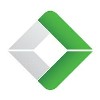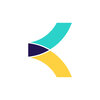
i
Valmet
Filter interviews by
Valmet Instrumentation Technician Interview Questions and Answers
Valmet Instrumentation Technician Interview Experiences
1 interview found
(3 Questions)
- Q1. What is current
- Ans.
Current is the flow of electric charge in a circuit.
Current is measured in Amperes (A)
It is the rate of flow of electric charge through a conductor
There are two types of current - AC (alternating current) and DC (direct current)
Examples of current include the flow of electrons in a wire when a light bulb is turned on
- Q2. What is voltage
- Ans.
Voltage is the difference in electric potential between two points in a circuit, measured in volts.
Voltage is the driving force that pushes electric current through a circuit
It is measured in volts (V)
Voltage can be positive or negative, depending on the direction of current flow
Higher voltage means more potential energy available to move electrons
Example: A battery provides voltage to power a light bulb
- Q3. What is Ohm's law
- Ans.
Ohm's law states that the current flowing through a conductor is directly proportional to the voltage applied across it, and inversely proportional to the resistance of the conductor.
Ohm's law is expressed as V = I * R, where V is voltage, I is current, and R is resistance.
It helps in calculating the current flowing through a circuit when the voltage and resistance are known.
It can also be used to determine the resista...
Interview Preparation Tips
Top trending discussions






Interview questions from similar companies

Instrumentation Technician Interview Questions & Answers
Schlumbergerposted on 25 Mar 2023
I applied via Job Fair and was interviewed in Feb 2023. There were 2 interview rounds.

(6 Questions)
- Q1. Any instrumentation equipment explain
- Ans.
Instrumentation equipment refers to devices used to measure, control, and monitor various parameters in industrial processes.
Instruments like pressure gauges, flow meters, and temperature sensors are commonly used in instrumentation.
Control valves and actuators are used to regulate the flow of fluids or gases.
Programmable Logic Controllers (PLCs) are used for automation and control of processes.
Analytical instruments l...
- Q2. PLC and scada and DCS
- Q3. PLC panel wiring diagram
- Ans.
A PLC panel wiring diagram is a visual representation of the electrical connections and components in a programmable logic controller panel.
A PLC panel wiring diagram shows the layout and connections of various components such as power supplies, input/output modules, relays, and sensors.
It helps technicians understand how the electrical signals flow within the panel and how different devices are interconnected.
The diag...
- Q4. What is the control valve
- Ans.
A control valve is a device used to regulate the flow of fluid or gas in a process system.
Control valves are commonly used in industries such as oil and gas, chemical, and power plants.
They can be operated manually or automatically through an electrical or pneumatic signal.
Control valves consist of a valve body, actuator, and positioner.
They can control variables such as flow rate, pressure, temperature, and level.
Exam...
- Q5. What is the transmitter
- Ans.
A transmitter is a device used in instrumentation to convert a physical measurement into an electrical signal.
Transmitters are commonly used in industries such as oil and gas, chemical, and power plants.
They are used to measure variables such as pressure, temperature, flow rate, level, and pH.
Transmitters typically consist of a sensing element, signal conditioning circuitry, and an output signal.
The sensing element det...
- Q6. What is the flow meters
- Ans.
Flow meters are devices used to measure the flow rate of a fluid or gas.
Flow meters are commonly used in industries such as oil and gas, water treatment, and manufacturing.
They can measure flow rates in various units such as liters per minute, cubic meters per hour, or gallons per minute.
Different types of flow meters include electromagnetic, ultrasonic, turbine, and differential pressure flow meters.
Flow meters can be...
Interview Preparation Tips
Skills evaluated in this interview

Instrumentation Technician Interview Questions & Answers
Schlumbergerposted on 22 Mar 2023

(3 Questions)
- Q1. Gas compressor and engine about
- Q2. What is transmitter,RTD, thermocouple and control valve and actuators,
- Ans.
Transmitter, RTD, thermocouple, control valve, and actuators are all important components in instrumentation technology.
Transmitter is a device that converts a physical parameter into an electrical signal.
RTD (Resistance Temperature Detector) is a type of temperature sensor that measures temperature by detecting changes in electrical resistance.
Thermocouple is another type of temperature sensor that measures temperatur...
- Q3. PLC and DCS workings
Interview Preparation Tips
I am studying diploma completed
I have been working in lakshya Power tech pvt Ltd 7year above experience

I appeared for an interview before Mar 2024, where I was asked the following questions.
- Q1. About Wet leg and dry leg for label transmitter
- Q2. What is the procedure for wet leg filling
- Ans.
Wet leg filling involves filling a differential pressure transmitter's wet leg with liquid for accurate measurement.
Identify the wet leg location and ensure safety protocols are followed.
Use a suitable filling liquid, typically water or a specific process fluid.
Connect a filling line to the wet leg and open the valve to allow liquid flow.
Monitor the filling process to avoid overfilling and ensure proper liquid level.
Ch...

I applied via Recruitment Consultant and was interviewed before Jun 2019. There were 4 interview rounds.
Interview Questionnaire
4 Questions
- Q1. 1.Pump and compressor trouble shooting.
- Q2. Safety watch roles and responsible
- Q3. Blinding procedure
- Q4. Pump alignment
Interview Preparation Tips

I appeared for an interview in Oct 2019.
Interview Questionnaire
1 Question
- Q1. Electrical Technician
Interview Preparation Tips

I applied via Recruitment Consultant and was interviewed before Jun 2019. There were 3 interview rounds.
Interview Questionnaire
1 Question
- Q1. 1. During confined space job , what is the role of safety watch ? 2. Alignment method of pump and motor. 3. Different type of Gasket , valves using in plant. 4. Compressor type and trouble shooting of rec...
- Ans.
Answering questions related to confined space job, alignment of pump and motor, types of gaskets and valves, and troubleshooting reciprocating compressor.
Safety watch is responsible for monitoring the workers inside the confined space and ensuring their safety.
Alignment of pump and motor can be done using dial indicators or laser alignment tools.
Different types of gaskets include spiral wound, ring joint, and sheet gas...

I appeared for an interview in Feb 2025, where I was asked the following questions.
- Q1. Mostly questions were from Artificial lift performance, especially based on ESP.
- Q2. Primary questions from Reservoir Engineering.

Mechanical Technician Interview Questions & Answers
Sterling Oil Exploration & Energy Productionposted on 5 Jan 2023
I appeared for an interview in Dec 2022.

(2 Questions)
- Q1. Engine relented question and preventive maintenance
- Q2. Technical issue gear box
Interview Preparation Tips

Production Engineer Interview Questions & Answers
Sterling Oil Exploration & Energy Productionposted on 29 Mar 2025
I appeared for an interview in Mar 2025, where I was asked the following questions.
- Q1. Whats ur skill
- Ans.
I possess strong analytical skills, proficiency in production processes, and a commitment to optimizing efficiency and quality.
Proficient in CAD software for designing production layouts, improving workflow efficiency.
Experience in Lean Manufacturing principles, successfully reducing waste by 20% in a previous role.
Strong problem-solving skills, demonstrated by troubleshooting production line issues that increased outp...
- Q2. How much experience do u have
- Ans.
I have over 5 years of experience in production engineering, focusing on process optimization and quality control.
Worked on a project that improved production efficiency by 20% through lean manufacturing techniques.
Led a team in implementing a new quality assurance protocol that reduced defects by 15%.
Collaborated with cross-functional teams to streamline operations and reduce lead times.
Conducted regular training sess...
Interview Preparation Tips
Valmet Interview FAQs
Tell us how to improve this page.
Valmet Interviews By Designations
- Valmet Project Manager Interview Questions
- Valmet Assistant Manager HRD Interview Questions
- Valmet Design Intern Interview Questions
- Valmet Store Coordinator Interview Questions
- Valmet Applications Engineer Interview Questions
- Valmet Instrumentation Technician Interview Questions
- Valmet Executive Interview Questions
- Valmet Design Engineer Interview Questions
- Show more
Interview Questions for Popular Designations
- Control & Instrumentation Engineer Interview Questions
- Instrumentation Supervisor Interview Questions
- Senior Instrumentation Technician Interview Questions
- Manager Instrumentation Interview Questions
- Electrical & Instrumentation Engineer Interview Questions
- Assistant Manager Instrumentation Interview Questions
- Electrical & Instrumentation Technician Interview Questions
- QC Inspector Instrumentation Interview Questions
- Show more
Valmet Instrumentation Technician Interview Process
based on 1 interview
Interview experience
Interview Questions from Similar Companies
|
Project Engineer
41
salaries
| ₹2.5 L/yr - ₹12 L/yr |
|
Design Engineer
40
salaries
| ₹4 L/yr - ₹9.5 L/yr |
|
Engineer
31
salaries
| ₹6.5 L/yr - ₹11.6 L/yr |
|
Applications Engineer
26
salaries
| ₹3.5 L/yr - ₹12.3 L/yr |
|
Senior Engineer
22
salaries
| ₹6 L/yr - ₹15 L/yr |

Shell

Schlumberger

Linde India

Baker Hughes
- Home >
- Interviews >
- Valmet Interview Questions >
- Valmet Instrumentation Technician Interview Questions










